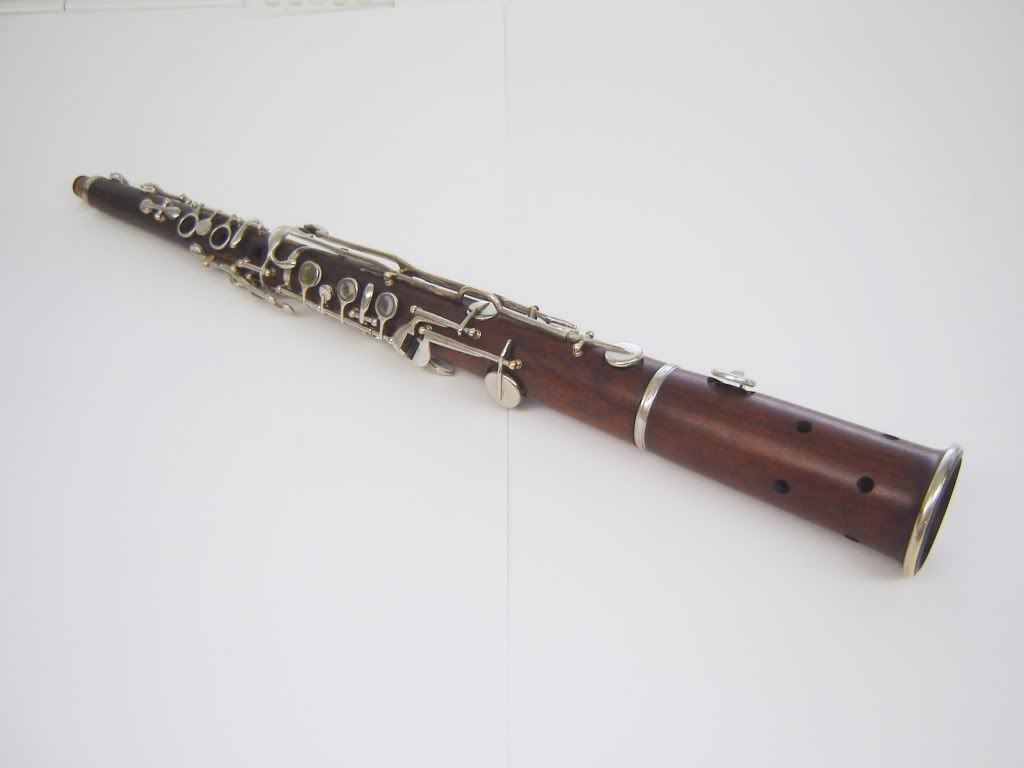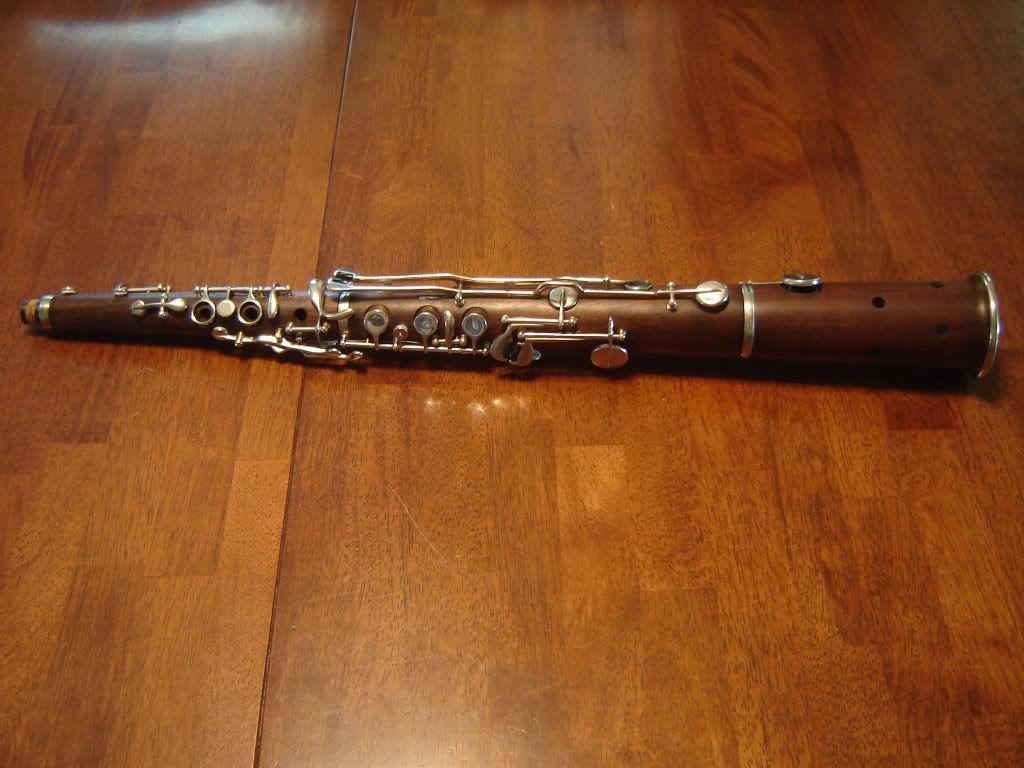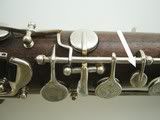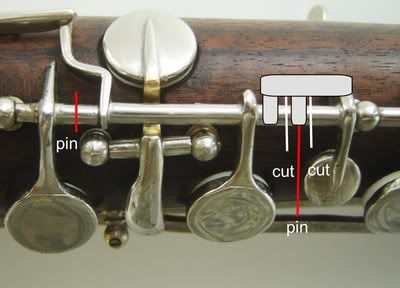Drum roll please....................................
At long last, the tárogató is in playable condition. The intonation is surprisingly good. The scale is a bit uneven with some notes that are stuffy and out of tune, but the octaves are right on which is very important. The lower octave doesn't speak as well as I would like since it takes a lot of effort voicing the notes to get them to respond, and there is still work to be done on the acoustics and taming the "wild bore", but that will come in time. Some key modifications need to be done to the lower joint to allow an F fingered 1 & 3 to facilitate the D to F and Eb to F change, and to make the low Bb playable using human anatomy.
Below are a few photos of the finished tárogató.


Here is a link to some soundclips of a few easy tunes demonstrating the tone of the instrument. http://soundcloud.com/jbtsax/sets/taragoto-sound-examples/
All in all it has been a great learning experience. Thanks again to Kymarto for giving me this opportunity.
At long last, the tárogató is in playable condition. The intonation is surprisingly good. The scale is a bit uneven with some notes that are stuffy and out of tune, but the octaves are right on which is very important. The lower octave doesn't speak as well as I would like since it takes a lot of effort voicing the notes to get them to respond, and there is still work to be done on the acoustics and taming the "wild bore", but that will come in time. Some key modifications need to be done to the lower joint to allow an F fingered 1 & 3 to facilitate the D to F and Eb to F change, and to make the low Bb playable using human anatomy.
Below are a few photos of the finished tárogató.


Here is a link to some soundclips of a few easy tunes demonstrating the tone of the instrument. http://soundcloud.com/jbtsax/sets/taragoto-sound-examples/
All in all it has been a great learning experience. Thanks again to Kymarto for giving me this opportunity.




